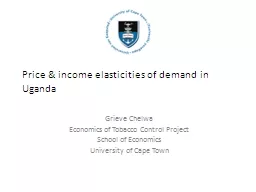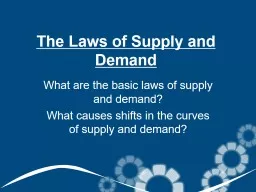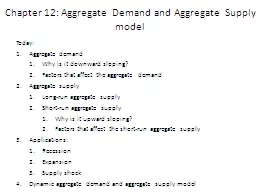PPT-Demand Elasticities and Supply Flexibilities of Fresh Produ
Author : celsa-spraggs | Published Date : 2016-04-20
SEDSI 02292012 Columbia SC Forrest Stegelin Agricultural and Applied Economics University of Georgia The BuyLocal Movement Specialty crop market for fresh fruits
Presentation Embed Code
Download Presentation
Download Presentation The PPT/PDF document "Demand Elasticities and Supply Flexibili..." is the property of its rightful owner. Permission is granted to download and print the materials on this website for personal, non-commercial use only, and to display it on your personal computer provided you do not modify the materials and that you retain all copyright notices contained in the materials. By downloading content from our website, you accept the terms of this agreement.
Demand Elasticities and Supply Flexibilities of Fresh Produ: Transcript
Download Rules Of Document
"Demand Elasticities and Supply Flexibilities of Fresh Produ"The content belongs to its owner. You may download and print it for personal use, without modification, and keep all copyright notices. By downloading, you agree to these terms.
Related Documents














